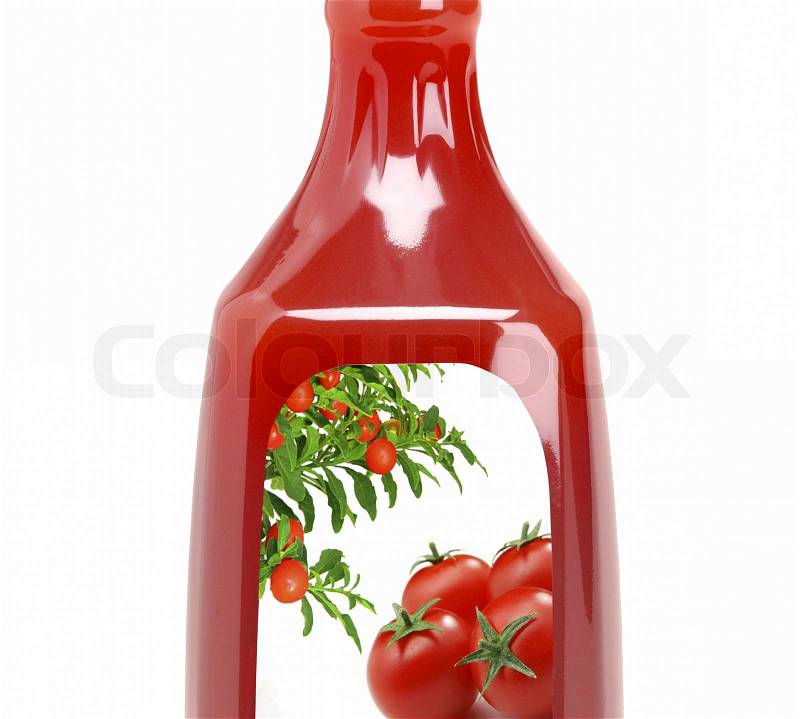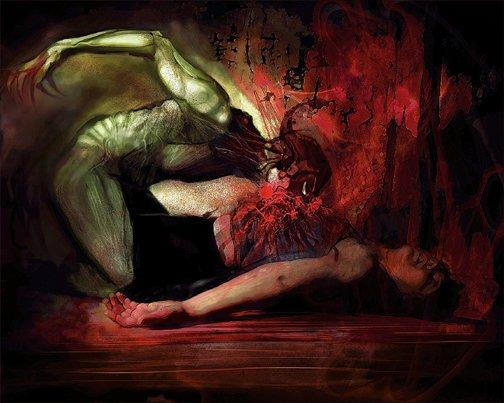 Every time I hear the term “zombie” applied to the flesh-eating, bacteria-virus-infested cannibals either of film or print, I cringe.
Every time I hear the term “zombie” applied to the flesh-eating, bacteria-virus-infested cannibals either of film or print, I cringe.They are not “zombies”--they are ghouls.
A “zombie” is a person brought back from the dead to serve as the slave of another person.
A “ghoul” is the malignant spirit of a dead person, a dead person whose body has been possessed, or a demon in human form who terrorizes the living by eating live flesh and causing havoc throughout the neighborhood.
The “zombie” movie that started it all never even called the dead cannibals “zombies”. Night of the Living Dead is attributed with having started the whole dead-eating-the-living craze. However, if you actually watch and listen to the movie, the dead-eaters are never referred to as “zombies”.
Because they are not “zombies”.
 Check out Ray Dennis Steckler's 1964 B-movie opus The Incredibly Strange Creatures Who Stopped Living and Became Mixed-Up Zombies!!? No flesh-eating here: just a crazy dead person killing those who did him and his crazy gypsy sister wrong.
Check out Ray Dennis Steckler's 1964 B-movie opus The Incredibly Strange Creatures Who Stopped Living and Became Mixed-Up Zombies!!? No flesh-eating here: just a crazy dead person killing those who did him and his crazy gypsy sister wrong.I feel a heated passion arise in me of late when I hear or read the terms “apocalyptic” and “dystopian” being used as synonyms.

Comments and reviews of The Hunger Games have helped to blur the line between the two distinct terms, but it's not the first story to do so. I don't know what Suzanne Collins calls her tale, but others have given it both the “apocalyptic” and “dystopian” labels—but it's really only one of those.
So, which is it?
------------------------------------------------
It's the difference between "ketchup" and "catsup".
Some will argue that the only difference between "ketchup" and "catsup" is the spelling. Such culinary pundits are woefully mistaken.
As with so many other foods that have become a staple of Western cuisine, "ketchup" was invented by the Chinese (鮭汁, kôe-chiap and kê-chiap) and brought to the West by Italian traders.
It was a sauce for fish. Those wacky Italians, though, made it into a sauce for just about everything else, including ice cream. I swear to God, I've seen people put it on ice cream.
So, I offer you my Chinese Vodka Ketchup recipe of my own particular taste:
Ingredients
- 1 6-ounce can tomato paste
- 1/3 cup brown sugar
- 1/2 cup apple cider vinegar
- 1/2 cup vodka or red wine or beer or whiskey
- 1 teaspoon sea salt
- 1/4 teaspoon onion powder
- 1/4 teaspoon garlic powder
- 1/4 teaspoon cumin
- 1/4 teaspoon curry
- 1/4 teaspoon paprika
- 1/4 teaspoon parsley
- 1/4 teaspoon ginger
- 1/4 teaspoon thyme
- 1/4 teaspoon cayenne pepper
- Combine ingredients in a saucepan over medium-low heat. Whisk to eliminate lumps while bringing to a boil. Reduce heat to low.
- Simmer partially covered (careful, the hot bubbles splatter) for 20 minutes, until thickened.
Notes
- Homemade ketchup won’t last as long as commercial ketchup, but with sugar and vinegar as natural preservatives, it should keep fine for a week or two in the fridge.
So, what's the difference between my Chinese Vodka Ketchup and any other "catsup"?
For "catsup", use white sugar and add more of it; leave out the vodka, wine, beer, or whiskey and use white vinegar instead; and leave out the cumin, curry, paprika, ginger, parsley, rosemary, thyme, and cayenne pepper. This will produce the bland sweet "catsup" Americans slather on everything.
------------------------------------------------------------------------
Okay--the difference between "apocalyptic" and "dystopian" genre.
First, an “apocalyptic” tale involves a story in which some catastrophic event has occurred in which the survival of humanity is in question. On the Beach is a good example of this. So are The Core, Armageddon, 2012, I am Legend, Resident Evil (et al), and the flood stories of Gilgamesh, Noah, Quiche Mayans, and many, many more. An "apocalyptic" tale results either from man's own negligence or God's wrath or nature's revenge.
Stephen Vincent Benet’s short tale “By the Waters of Babylon” is a perfect example of the apocalyptic event caused sometime in the distant past by humans themselves.
An “apocalyptic” tale almost always includes some spiritual message within the story. Benet’s tale turns the apocalyptic event into a dream of a great burning in which the gods were displeased with humans and mankind was nearly wiped out.
A “dystopian” tale is one in which a repressive government enslaves its people in the belief that humans need repression in order to save them from themselves-- or simply because those in power are in it for the sake of the power itself.
In a dystopian story, society believes it has achieved Utopia and cannot or does not see the fatal flaw within its system that is actually working against the advancement of Humankind--usually the repression of individual choice and creativity, as in Ayn Rand’s Anthem, Bradbury's Fahrenheit 451, and Lowry's The Giver. In almost every tale, the government sets out to repress individual choice and creativity and even destroy human productivity and enlightenment.
V for Vendetta is one of the best examples. Nineteen Eighty-four is an excellent example of a government enslaving its people simply for the sake of power: “Do want to see a picture of humanity?” O’Brian says to Winston. “It’s a boot in the face.”
Other good examples of true dystopian fare are Equalibrium, The Postman, the short story “Harrison Bergeron” by Kurt Vonnegut, The Handmaid’s Daughter, and, yes, The Hunger Games.
 One of the best tales in which a dystopian culture is belched from an apocalyptic event is Repo: The Genetic Opera. In Terrance Zdunich's tale, the apocalyptic catalyst is the failure of human organs. The dystopia arises when Genco offers savioristic transplants and a culture paradigm shift emerges in which everyone believes society has achieved utopia.
One of the best tales in which a dystopian culture is belched from an apocalyptic event is Repo: The Genetic Opera. In Terrance Zdunich's tale, the apocalyptic catalyst is the failure of human organs. The dystopia arises when Genco offers savioristic transplants and a culture paradigm shift emerges in which everyone believes society has achieved utopia.Another good example of the apocalyptic-to-dystopia scenario is P.D. James's The Children of Men. This tale of the future demise of humanity begins with the last child born on earth dying--and he's 18-years-old. Humanity can no longer reproduce. Society shifts into paranoid mode in which whole countries are now barb-wired from each other, each blaming the other for the "disease" of sterility, and everything from a space virus to God's Armageddon is offered for the explanation as to why humans can no longer produce children. A new culture arises as human kind slouches through the apocalyptic slough, a dystopian culture.
 Collins’s tale is not “apocalyptic”.
Collins’s tale is not “apocalyptic”.I will submit that a dystopian setting can arise out of an apocalyptic event and an apocalyptic event can result in a dystopian society’s choices.
Generally speaking, though, the tale is dominated by one or the other. The Hunger Games is without question dystopian, not apocalyptic. Maybe it will morph in apocalypticism or the society is the result of an apocalyptic event, but the events in the story itself lead to only one conclusion: dystopian.
My tale NEVЯLAND is apocalyptic whereas my story Popinjay is dystopian.
I have approached each with the distinct definitions clearly delineated in order to keep the two tales straight and true to their intended purposes. The backstory of NEVЯLAND does not have dystopian catalyst just as the backstory of Popinjay has no apocalyptic event.
Okay, I know some will protest: “This is a distinction without a difference, like zombies and ghouls.”
And thus I taunt you with this: Nuts! It’s the distinction that makes the difference in the first place.
Zombies are not Ghouls.
Apocalypticism is not Dystopianism.
Ketchup is not Catsup.
Eat well.
Write well.
Larry Mike
No comments:
Post a Comment